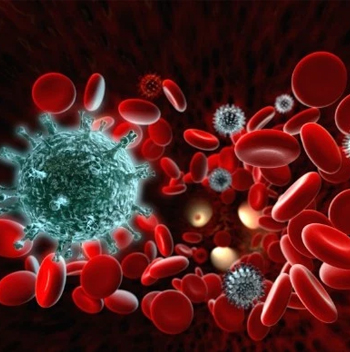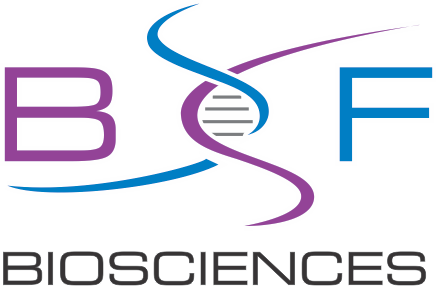BACKGROUND
Chemotherapy treatments aim to kill cancer cells in the body. These medications target fast-growing cells in the body and destroy them. While some of the fast-growing cells being killed by these drugs are cancer cells, there are other healthy cells that grow quickly that can also get killed by chemotherapy, leading to a wide variety of side effects.
Neutropenia is a condition in which the blood does not have enough cells called “neutrophils.” Neutrophils are a type of white blood cell. They help your body fight infections. Neutropenia can happen to people being treated for cancer. That’s because the medicines used to kill cancer cells or stop them from growing (called “chemotherapy”) impair the body’s ability to make all blood cells, including neutrophils.
People who get neutropenia because of their cancer treatment can get infections easily. In many cases the only sign of these infections is fever. This is called “neutropenic fever” or “febrile neutropenia.” Fever in someone with neutropenia is very serious.
DISEASE OCCURRENCE IN POPULATION
Fever developing during neutropenia is a frequent complication in neutropenic cancer patients, affecting 80% of those with hematological malignancies and 10–50% of those with solid malignancies. Its incidence in solid metastatic cancers was estimated to be about 13–21%, depending on the underlying disease, and occurred mostly during the first chemotherapy cycle.

RISK FACTORS
The common risk factors for CIN and its complications can be classified based on disease, patient characteristics, and type of treatment.
- Disease-Specific Risk Factors
Tumor Type: Patients with hematologic malignancies are at greater risk for neutropenic complications than patients with solid tumors because of the underlying disease process as well as the intensity of the treatment that is required.
Advanced Disease and Uncontrolled Cancer: Both advanced disease and uncontrolled cancer were significant hospitalization for febrile neutropenia, and serious neutropenic complications, including death.
- Patient-Specific Risk Factors
Age: Advanced age is a particularly important independent risk factor, since older patients are often treated with lower chemotherapy doses to minimize the occurrence of neutropenic complications.
Performance Status: Poor performance status is a significant risk factor for chemotherapy-induced neutropenia. In older patients, physiologic age or weakness may be a more accurate predictor of risk than chronologic age.
Comorbidities: The presence of comorbid conditions with cancer has been shown to increase the risk for neutropenia and its complications. For example:
- Renal disease and heart disease have been shown to increase the risk for febrile neutropenia.
Laboratory Abnormalities: Blood cell counts and chemistry analyses may indicate either the extent of disease, comorbid conditions, or the impact of cytotoxic chemotherapy. Many of these laboratory abnormalities have been identified as predictors for CIN and its complications.
- Treatment-Specific Risk Factors
Chemotherapy Regimen: The intensity of specific chemotherapy regimens is one of the primary determinants of the risk for CIN, with some regimens being more myelosuppressive than others.
Colony stimulating factor (CSF) Use: Several studies in lymphoma have shown that prophylactically administered of CSF is associated with a significantly lower risk of severe neutropenia and FN.
SIGNS AND SYMPTOMS
Go to the emergency room right away if you have received chemotherapy within the last 6 weeks (or if you have been told you have neutropenia) and you:
- Have a fever of 101.0°F (38.3°C) or higher, taken by oral thermometer, at any time
- Have a fever of 100.4°F (38.0°C) or higher, taken by oral thermometer, and it lasts for 1 hour or longer
If you have been told that you have neutropenia or you received chemotherapy less than 6 weeks ago, you should also tell your doctor or nurse if you get any of the following symptoms:
- Chills or sweating
- Sore throat, sores in the mouth, or a toothache
- Stomach pain
- Pain in the anal area
- Pain or burning when urinating, or frequent urination
- Diarrhea or sores around the anus
- Cough or shortness of breath
- Redness, swelling, or pain of your skin, especially around a cut, wound, or place where you had a tube in your vein (called an “IV”)
Unusual vaginal discharge or itching
DIAGNOSTIC TESTS
Your doctor will order a complete blood count (CBC) before and after chemotherapy to determine your white blood cell count (WBC). Your total white blood cell count is usually in the range of 4,000 to 10,000 white blood cells per cubic millimeter. Your doctor will be interested in your absolute neutrophil count (ANC) which is somewhat lower than your total white count. A normal ANC is in the range of 2,500 to 6,000 neutrophils per cubic millimeter. There are 3 degrees of neutropenia:
- ANC of 1000 to 1500: Mild (meaning a minimal risk of infection)
- ANC of 500 to 1000: Moderate (associated with a moderate risk of infection)
- ANC less than 500: Severe (indicating a high risk of developing an infection)
Diagnostic evaluation of patient with FN also includes following investigations:
- Physical Examination
- Laboratory tests
- Blood cultures
- Radiography – Patients with respiratory signs and symptoms should have a chest radiograph to rule out pneumonia.
Serum Markers of Inflammation
TREATMENT OPTIONS
If your white count becomes too low, it may be necessary to hold off on your next dose of chemotherapy.
Options for treatment include:
Preventative Antibiotics: Sometimes antibiotics are used preventatively before you have any signs of infection.
Medications: Medications (growth factors) may be used to stimulate the production of neutrophils in your bone marrow (preventively or as a treatment for a low neutrophil count). These include:
- Filgrastim, G-CSF
- Pegfilgrastim
- Sargramostim, GM-CSF
Treatment of Infections
Infections can be very serious when you lack the white blood cells to fight off bacteria. If you have an infection in this setting your oncologist will usually recommend hospitalization with intravenous antibiotics. Antibiotic treatment with broad-spectrum antibiotics is also recommended for those who have “febrile neutropenia,” a fever that suggests an infection even if the source of the infection is not obvious.
PRECAUTIONS
In some cases, doctors prescribe antibiotics to people who are at high risk of infection before they get a fever. Also, in some cases, doctors can prescribe medicines that help the body make more neutrophils. But these medicines are not appropriate for everyone who is treated for cancer.
If you are being treated for cancer, the most important thing you can do is to protect yourself from getting an infection in the first place. Here are some things you should do:
- Wash your hands often with soap and water. You can also use alcohol hand rubs.
- Avoid crowded places and people (especially children) who are sick.
- Do not share food, cups, utensils, or other personal items, such as toothbrushes.
- Shower or bathe every day and use lotion to keep your skin from getting dry and cracked.
- Wear gloves when handling waste from dogs, cats, or other pets. Then wash your hands right afterwards.
- Use gloves to garden, or avoid gardening.
- Brush your teeth and gums every day with a soft toothbrush. If your doctor or nurse recommends it, use a mouthwash to prevent mouth sores.
- Keep surfaces (such as kitchen counters) in your home clean.
- Get the flu shot every year.
- Don’t go outside barefoot.
- Cleaning cuts and scrapes, then covering them with a bandage
- Using an electric shaver rather than a razor
- Avoiding unpasteurized dairy foods; undercooked meat; and raw fruits, vegetables, grains, nuts, and honey
- Staying out of hot tubs, ponds, and rivers
- Avoid rectal temperature measurements and rectal examinations.
- Avoid raw and undercooked meat or well water
- Commercial fruit juices, beer, milk, and milk products should be pasteurized
- Aged cheese and cheese-based dressings should not be used
- Outdated products and all moldy products should not be consumed
- Cook meat, eggs, and fish all the way through to kill any germs.
Carefully wash raw fruits and vegetables before eating them.
REFERENCES
- https://www.uptodate.com/contents/neutropenia-and-fever-in-people-being-treated-for-cancer-the-basics?topicRef=16139&source=see_link
- https://lungcancer.net/living/chemotherapy-induced-neutropenia/
- Freifeld AG, Bow EJ, Sepkowitz KA, Boeckh MJ, Ito JI, Mullen CA, Raad II, Rolston KV, Young JA, Wingard JR, et al. Clinical practice guideline for the use of antimicrobial agents in neutropenic patients with cancer: 2010 Update by the Infectious Diseases Society of America. Clin Infect Dis 2011; 52:427-31
- Klastersky J. Management of fever in neutropenic patients with different risks of complications. Clin Infect Dis 2004; 39 Suppl 1:S32-7
- Weycker D, Li X, Edelsberg J, Barron R, Kartashov A, Xu H, Lyman GH.. Risk and Consequences of Chemotherapy-Induced Febrile Neutropenia in Patients With Metastatic Solid Tumors. J Oncol Pract 2015; 11:47-54
- https://www.webmd.com/a-to-z-guides/neutropenia-causes-symptoms-treatment#2
